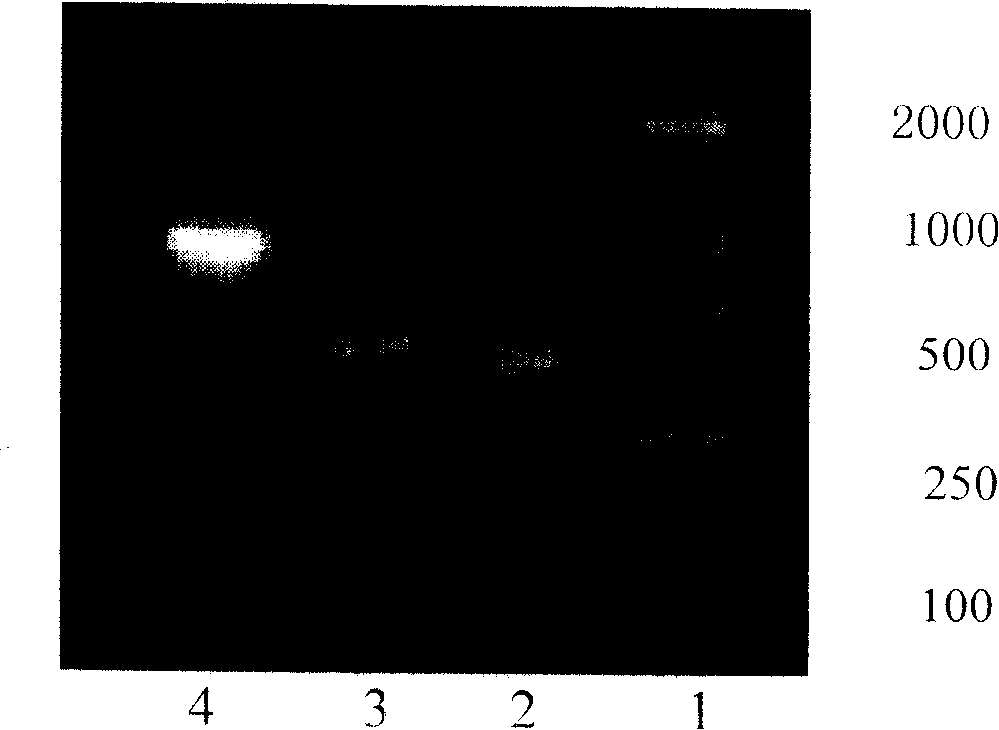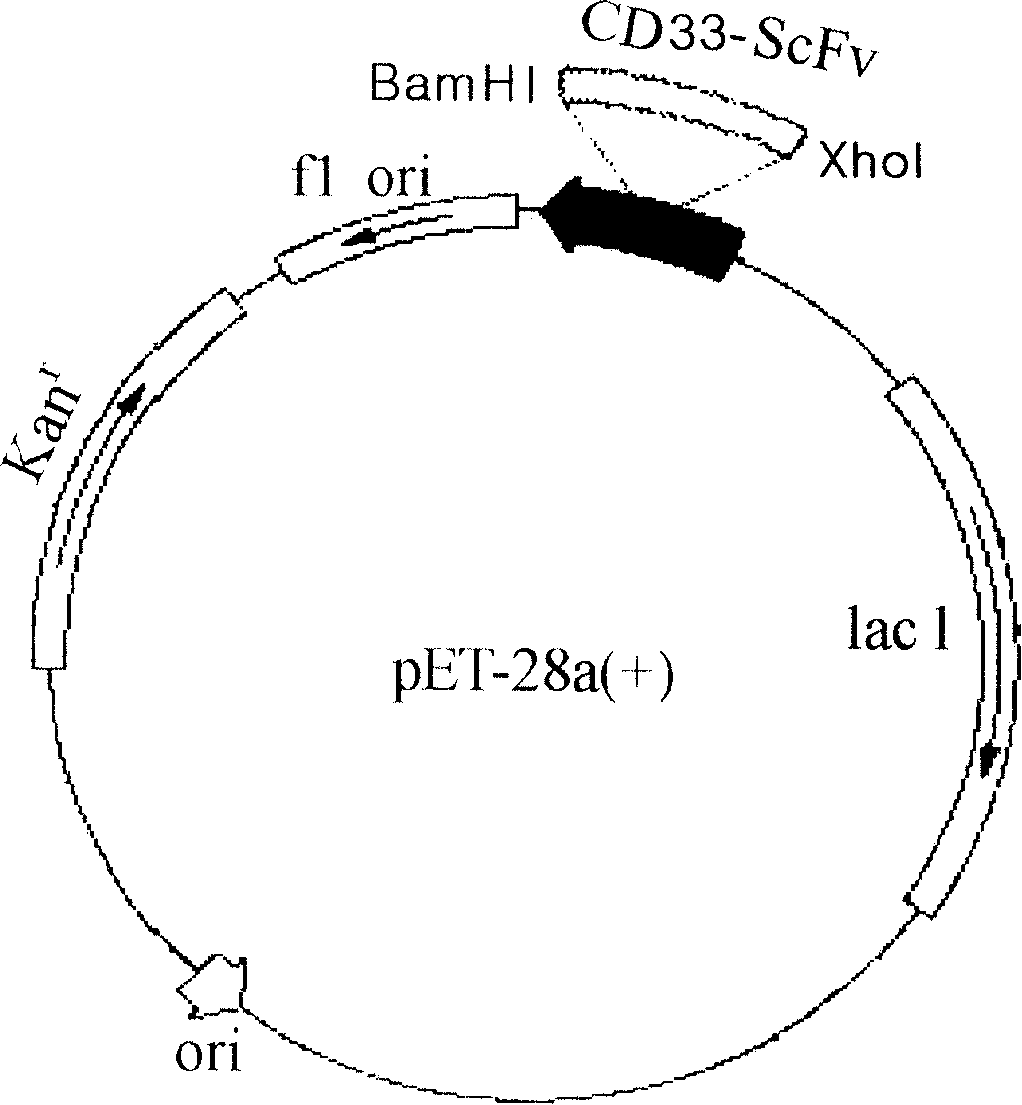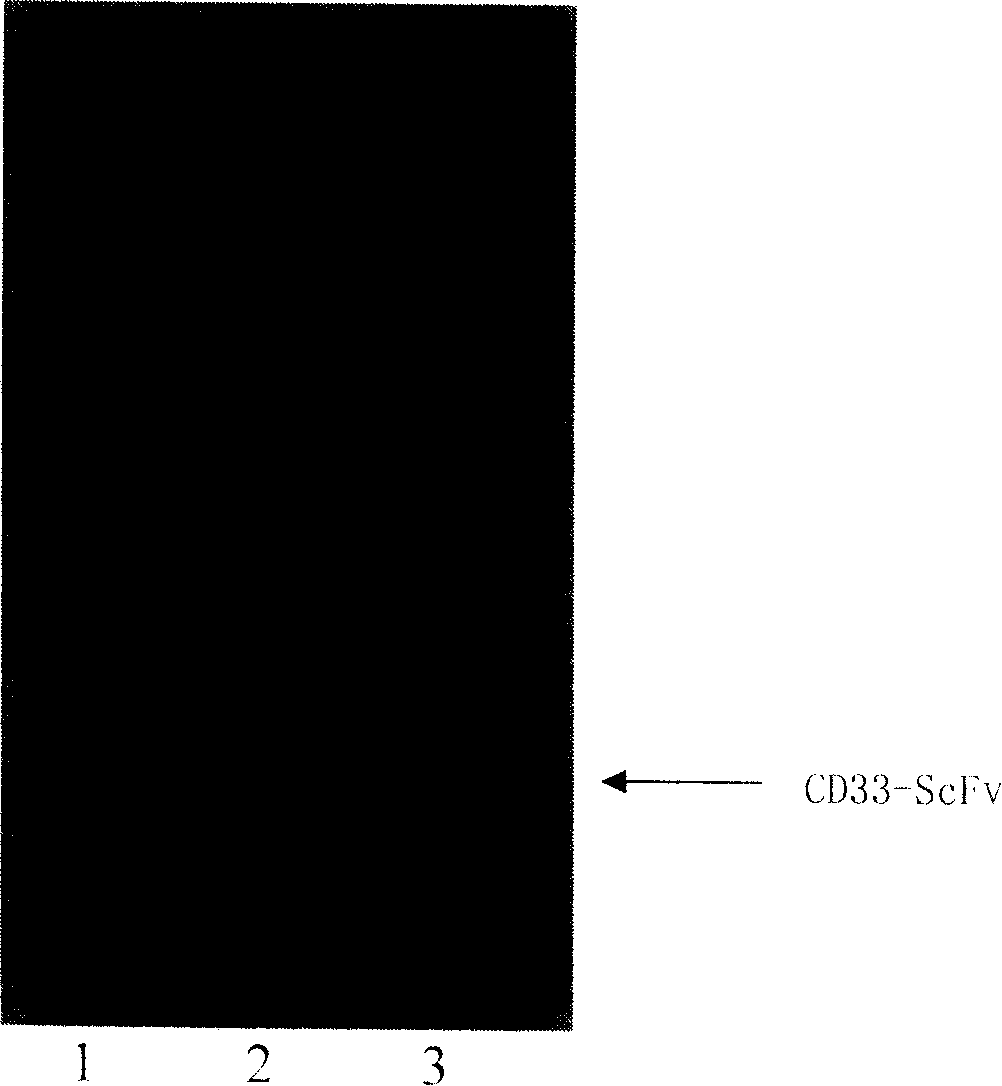Anti-CD33 engineering antibody for target conjugated marrow series leukemia cell and its expression vector and use
A myeloid leukemia and targeted combination technology, which is applied in the field of engineering antibodies, can solve problems such as limiting drug application doses, tumor cell resistance to chemotherapy, and toxic and side effects in normal tissues, achieving rapid blood circulation and systemic clearance, tumor/ The effect of high normal tissue distribution rate and less immune rejection reaction
- Summary
- Abstract
- Description
- Claims
- Application Information
AI Technical Summary
Problems solved by technology
Method used
Image
Examples
Embodiment 1
[0028] Example 1: Cloning of light and heavy chain variable region genes of anti-CD33 monoclonal antibody
[0029] Application of RT-PCR method to amplify the light and heavy chain variable region genes of anti-CD33 antibody from anti-CD33 monoclonal antibody HIM3-4 hybridoma cells:
[0030] (1) RNA extraction: adopt Trizol one-step method, 1) get about 10 hybridoma cells 6 , add 1ml Trizol, mix by pipetting, and let stand at room temperature for 5 minutes. 2) Add 0.2ml of chloroform, shake vigorously for 15 seconds, and let stand at room temperature for 2-3 minutes. 3) Centrifuge at 12000 rpm at 4°C for 15 minutes. 4) Take the supernatant, add 0.5ml of isopropanol and let stand at room temperature for 15 minutes. 5) Centrifuge at 12000 rpm at 4°C for 15 minutes. 6) Discard the supernatant, add 1ml of 75% ethanol to wash, centrifuge at 7500rpm, 4°C for 5 minutes. 7) Discard the supernatant, dry the pellet, and add 30 μL of DEPC-treated water to dissolve the RNA.
[0031]...
Embodiment 2
[0036] Example 2: Construction of single-chain antibody gene expression vector pET28a ScFv
[0037] Primers for VH and VL gene amplification and splicing were designed and synthesized according to the gene sequences of the variable regions of the light and heavy chains.
[0038] Light chain upstream: GACATTGTGATGACCCAGTCTc
[0039] Light chain downstream: ACC AGA TCC ACC TCC ACC CGA GCC ACC GCC ACCCCGTTTCAGTCCAGCTTGGTCCC
[0040] Heavy chain upstream: TCG GGT GGA GGT GGA TCT GGT GGT GGC GGT TCGGAGGTGAAGCTTCAGCAATCAGGA
[0041] Downstream of the heavy chain: TGAAGAGACAGTGACCGTGGT
[0042] A BamH I restriction site was added to the 5' end of the upstream light chain, and an Xho I restriction site was added to the 3' end of primer 4. From the constructed pMD-18T19-VH and pMD-18T19-VL vectors, the VH and VL fragments were amplified by PCR, and after recovery, the anti-CD33 ScFv gene fragments were amplified by PCR through the overlapping extension splicing method ( figure ...
Embodiment 3
[0043] Example 3: Expression, purification and renaturation of anti-CD33 ScFv antibody fragments
[0044] (1) Transform Escherichia coli Rosseta with the successfully constructed expression vector PET-28a(+), pick a single colony and inoculate it in 5 mL of LB medium containing 34 μg / mL chloramphenicol and 50 μg / mL kanamycin, at 37 °C Shake culture at 200r / min overnight, dilute the overnight bacterial solution with 1:100 the next day, continue to shake until OD550 is between 0.6-0.8, add inducer IPTG to a final concentration of 0.5mmol / L, and shake on a shaker at 37°C. Shake for 5 hours to stop the induction. Take 100ul of bacterial liquid, centrifuge, discard the supernatant, keep about 20μl, then resuspend with 20μl 2XSDS loading buffer, boil at 100°C for 5min. Take 20 μl of the sample, detect the expressed protein by 10% SDS-PAGE, and stain with Coomassie brilliant blue. The experiment proved that the recombinant plasmid pET28a(+)ScFv was induced by IPTG to express the re...
PUM
 Login to View More
Login to View More Abstract
Description
Claims
Application Information
 Login to View More
Login to View More - R&D
- Intellectual Property
- Life Sciences
- Materials
- Tech Scout
- Unparalleled Data Quality
- Higher Quality Content
- 60% Fewer Hallucinations
Browse by: Latest US Patents, China's latest patents, Technical Efficacy Thesaurus, Application Domain, Technology Topic, Popular Technical Reports.
© 2025 PatSnap. All rights reserved.Legal|Privacy policy|Modern Slavery Act Transparency Statement|Sitemap|About US| Contact US: help@patsnap.com



